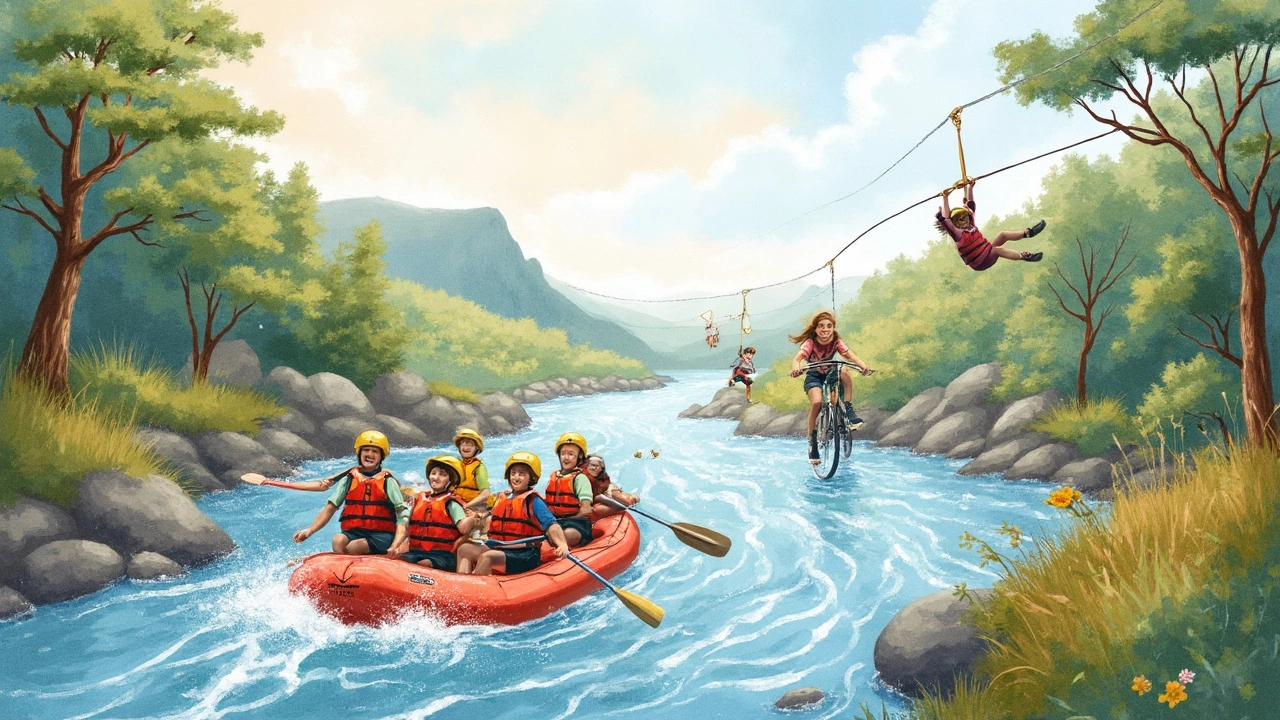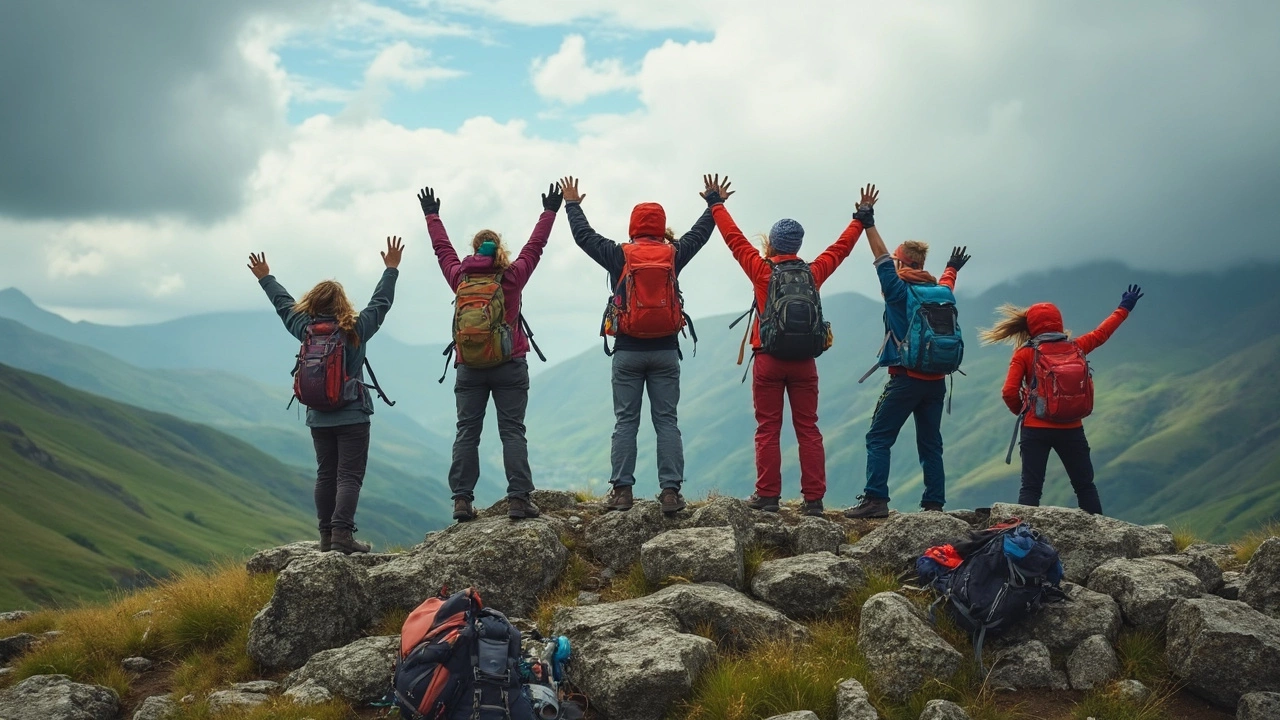Think going on vacation means lounging at a resort or doing the same old sightseeing? Adventure vacations break that mold. These trips aren’t about sitting still or following the usual tourist routes. Instead, they're about getting your heart racing—maybe by hiking up a volcano, rafting down wild rivers, or trying something completely out of your comfort zone.
An adventure vacation isn’t just for expert athletes or thrill-seekers, either. It’s really about pushing your boundaries, whatever that means for you. Maybe it’s strapping on hiking boots for the first time. Or traveling solo somewhere your friends have never heard of. What matters is you’re active, curious, and present—not just ticking boxes on a checklist.
- The Real Meaning of Adventure Vacation
- Why People Choose Adventure Over Relaxation
- Types of Adventure Holidays Worth Trying
- How to Get Ready for Your Own Adventure Trip
The Real Meaning of Adventure Vacation
Ask ten people to define an adventure vacation, and you'll probably get ten different answers. But here’s what really sets it apart: it’s a trip built around new experiences, unexpected challenges, and usually a good dose of adrenaline. You’re not just visiting somewhere new; you’re also doing something you’ve never done before.
The adventure vacation is about the activity and the feeling it brings—not just the location. This might mean climbing, kayaking, biking, wild camping, or even learning to surf. You decide what “adventure” looks like for you. There’s no minimum fitness level, age, or skill required. If the idea of the trip makes you a little nervous (in a good way), you’re probably on the right track.
More people are craving these types of experiences. According to the Adventure Travel Trade Association, the global adventure travel market hit $366 billion in 2022, and it’s growing every year. It’s not just about thrill-seeking—lots of travelers pick adventure vacations because they want to see the world in a more active, connected way.
| Stat | Data |
|---|---|
| Global Adventure Travel Market Size | $366 Billion |
| % of Travelers Booking Adventure Activities | About 42% |
| Most Popular Adventure Activity | Hiking/Walking Tours |
| Top Adventure Destination | New Zealand |
Adventure vacations come in every style. Some are tough, like trekking to Everest Base Camp. Others are more chill, like a guided snorkeling trip or a family rafting day. The real meaning comes down to this—are you getting out of your routine? Are you learning, moving, or seeing things in a new way? If the answer’s yes, you’re on an adventure vacation.
- It’s about personal challenge, not competition.
- You can go solo or with friends, in your home country or far away.
- There’s often some risk, but it’s managed, and usually part of the fun.
Why People Choose Adventure Over Relaxation
If you’ve ever wondered why someone would trade a comfy sunbed for hiking boots or whitewater rapids, you're not alone. The idea is catching on for a reason. People want more from their trips these days than just nice photos—they’re searching for real experiences and stories to tell.
One big reason is the science of happiness. Researchers at the University of Texas found that people feel happier and more satisfied with adventure vacations because unique experiences stick longer in our memories than routine ones. Sitting by the pool feels good for a day, but hiking through the rainforest or spotting wildlife makes you feel alive, and you remember it for years.
Health is another factor. Harvard Health reports that active travel, like hiking or biking, helps you sleep better and reduces stress more than passive leisure. It’s not just about burning calories—adventure trips really do lower stress hormones and boost your mood. People who chase adventure often go home feeling more energized and refreshed, not just rested.
Plus, confidence grows when you try something new. A recent survey by the Adventure Travel Trade Association showed that over 70% of people who tried an adventure holiday said it gave them a sense of accomplishment they’d never felt on a regular trip. They came back with new skills and a bigger belief in themselves.
Check out how people today are choosing adventure over traditional holidays:
| Type of Vacation | Percentage of Travelers (2024) |
|---|---|
| Adventure-based (hiking, diving, rafting) | 32% |
| Traditional relaxation (resorts, cruises) | 45% |
| Cultural/Sightseeing tours | 23% |
It’s not always about thrill-seeking. Sometimes it’s wanting to disconnect from screens, learn about different cultures, or just see if you can do it. That buzz of trying something for the first time? It’s hard to beat—and it’s a big reason more people choose action over relaxation, even if their friends think they’re a little crazy.

Types of Adventure Holidays Worth Trying
If you're itching for an adventure vacation, the choices can honestly feel endless. You don’t need to be a mountain climber or a pro surfer to find something that works for you. Here are a few tried-and-true types of adventure holidays people love:
- Trekking and Hiking Trips: Think of places like Peru’s Inca Trail, the Appalachian Trail in the US, or the Dolomites in Italy. These treks are about getting outside, seeing landscapes you’d never reach by car, and pushing your own limits.
- Wildlife Safaris: Africa might be the classic, but there are safaris in Costa Rica, India, and even the Galapagos Islands. These aren’t just for seeing animals—they’re immersive, sometimes heart-pounding experiences where you cross paths with nature’s real celebrities.
- Water-Based Adventures: Kayaking in Norway’s fjords, whitewater rafting in Colorado, or scuba diving the Great Barrier Reef. Whether you like calm waters or wild rapids, there’s something for every speed.
- Winter Adventures: Ever tried dog sledding in Lapland? Or ice climbing in Iceland? These holidays swap palm trees for snow but keep the adrenaline switched on.
- Multi-Activity Trips: Why choose just one? Companies now offer holidays that mix biking, ziplining, and even rock climbing over the course of a single week.
Here’s a quick look at how popular some of these options are worldwide:
| Type of Adventure | Estimated Annual Participants (World) | Top Destinations |
|---|---|---|
| Trekking/Hiking | 100 million+ | Peru, Nepal, US, Italy |
| Wildlife Safaris | 30 million+ | Africa, Costa Rica, India |
| Water Sports | 120 million+ | Australia, Norway, US |
| Winter Sports | 70 million+ | Canada, Finland, Switzerland |
You don’t have to go halfway across the world either. Many people start with local options—like a weekend kayaking trip or hiking a state park they’ve never explored. What matters is the experience, not ticking exotic locations off a list.
And if you’re wondering about safety, most reputable operators provide gear, guides, and prep info before you even land. There are adventure trips for full beginners and for the daredevils. Bottom line: there’s something for every comfort zone, and you might discover a new favorite way to travel while you’re at it.
How to Get Ready for Your Own Adventure Trip
Prepping for an adventure vacation is a bit different than packing for a beach getaway. These trips need a little more planning, but it makes all the difference once you hit the trail, mountain, or river. Here’s how to start off right and sidestep rookie mistakes.
First, research your destination. Check weather, average temperatures, and local rules. Some spots have strict guidelines on what you can bring, where you can camp, or how to act around wildlife (like in national parks). Make sure your passport is up to date if you’re heading abroad—don’t find out at the airport that it’s expired.
Physical prep matters, too, even for beginners. If your adventure includes hiking, backpacking, or biking, spend a few weeks walking, stretching, or doing some light cardio. You don’t need to be an athlete—just being in decent shape means you’ll have more fun and recover faster after a long day outdoors.
Packing is another big one. Forget looking Instagram-perfect—pick practical gear. Start with a solid pair of shoes or boots, moisture-wicking layers, and a lightweight rain jacket. If you’re not sure what to pack, check out gear lists from reputable adventure companies online. Always bring a compact first aid kit, water bottle with a filter, and snacks you know you’ll want. People often forget sunscreen, bug spray, or a hat—they matter way more than most people think.
- Double-check if you need any permits ahead of time, especially for popular trails or parks.
- Tell a friend or family member your travel plans, just in case.
- Have digital and paper copies of your ID, travel insurance, and emergency contacts.
- If you’re using a guide or tour company, read reviews and confirm details like transportation, meals, and gear they provide.
Finally, set your expectations. Nature isn’t on your schedule. Things can change because of weather or trail conditions. Go in with a mindset to embrace the unexpected—that’s often where the best stories come from.
